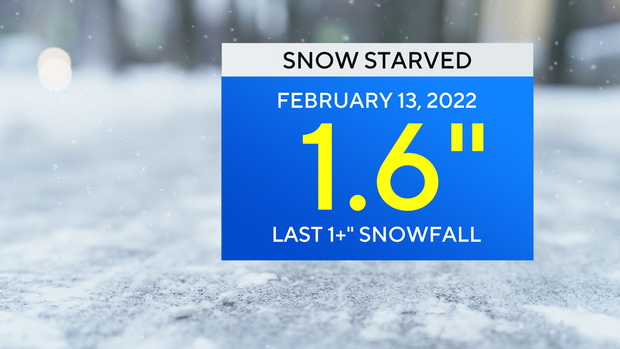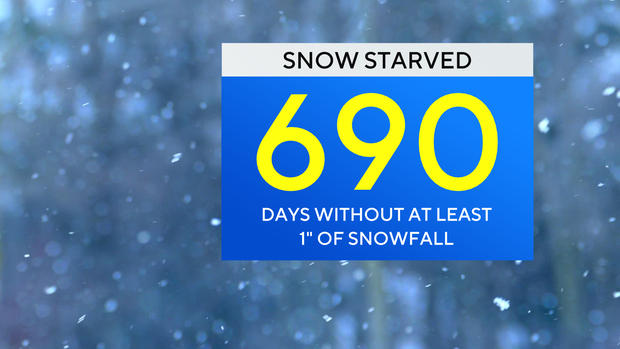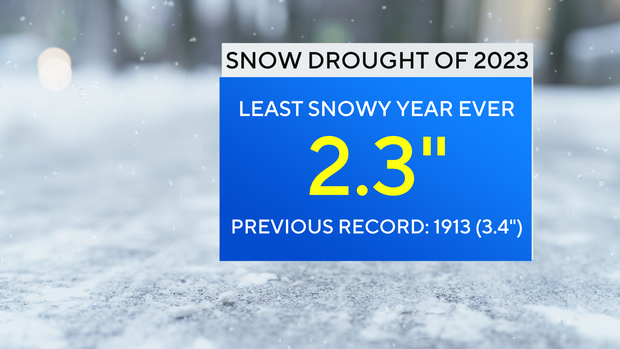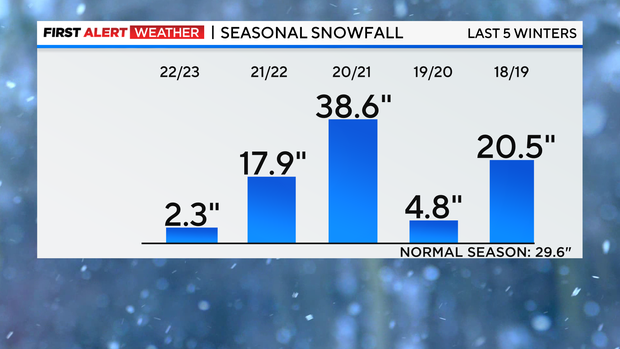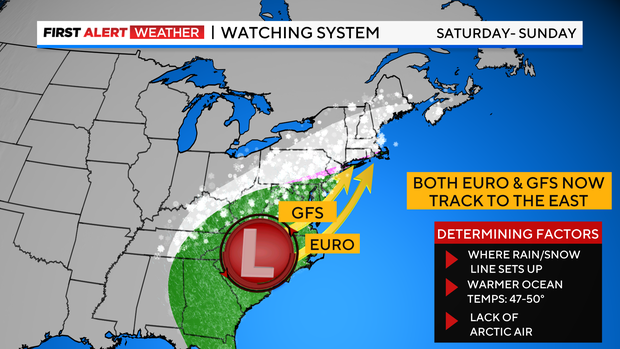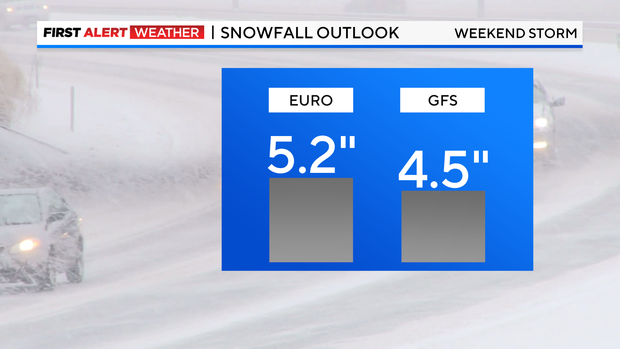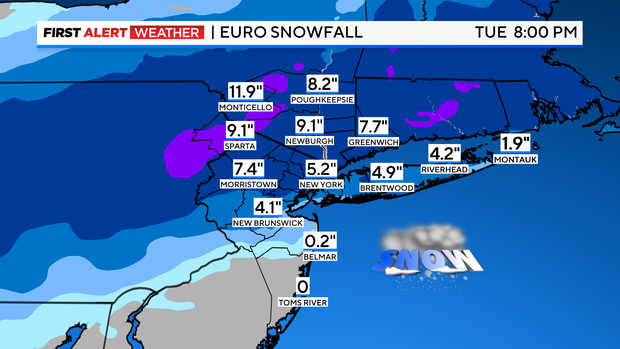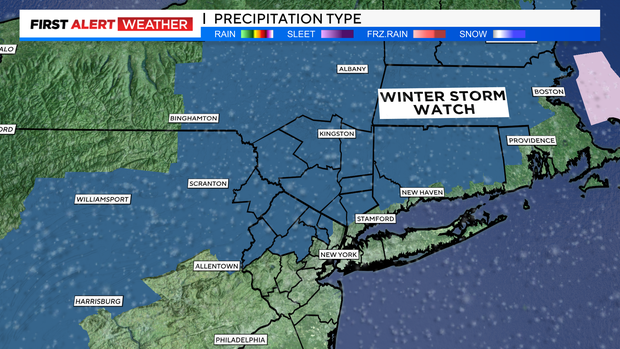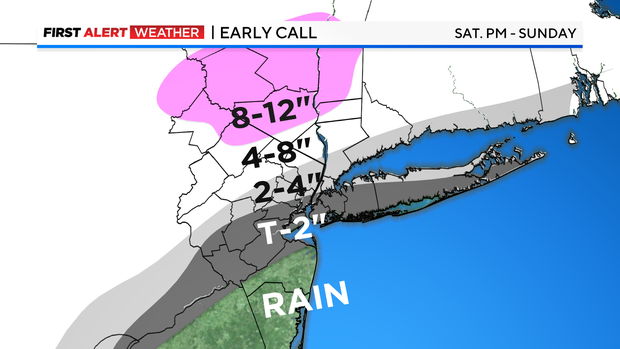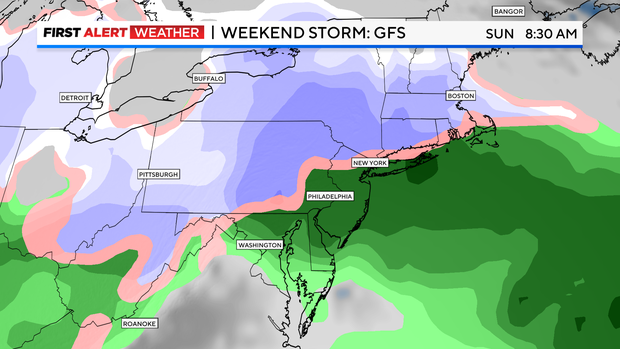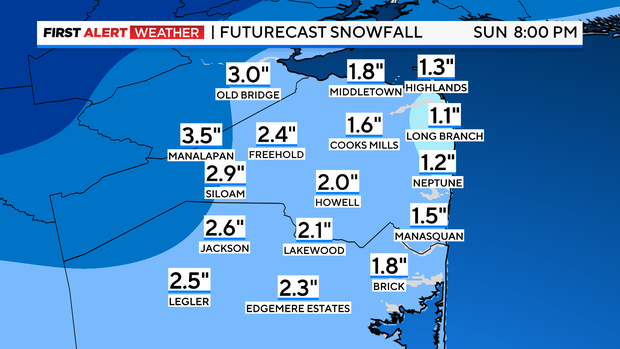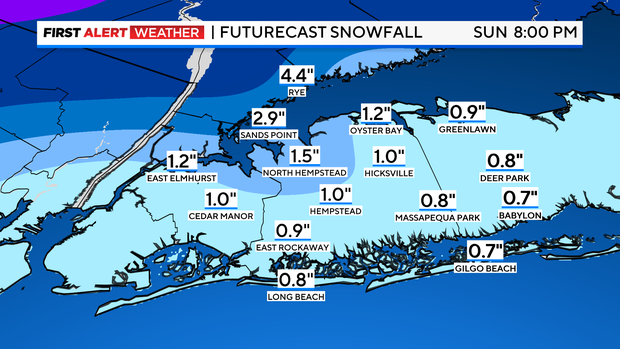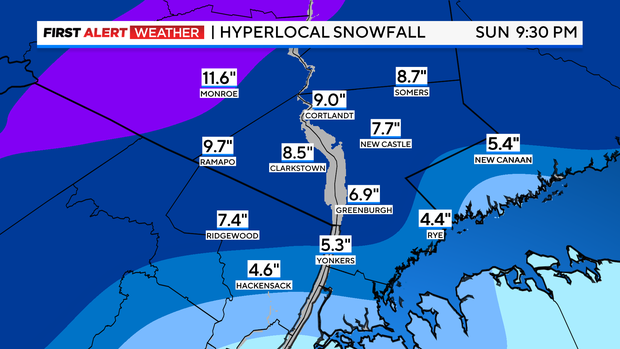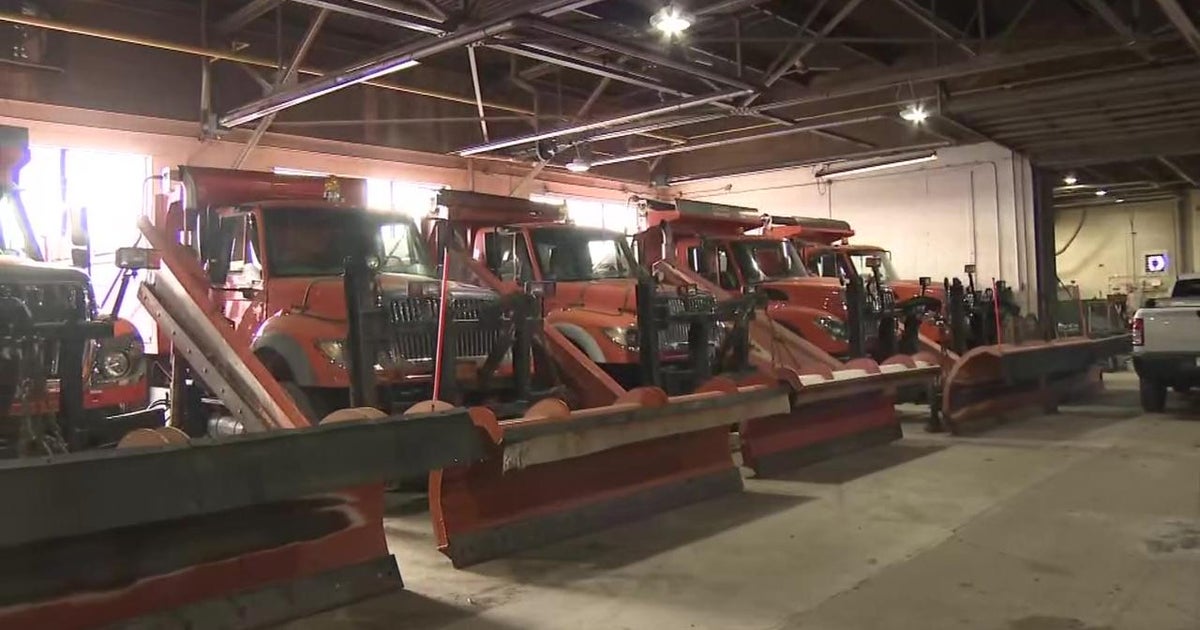Updated weekend snowfall forecast for NYC, New Jersey, Long Island and Connecticut from the First Alert Weather Team
NEW YORK -- For snow lovers across the Tri-State area, it's been a difficult last several years.
Not only was 2023 the least snowy calendar year ever recorded, but last winter was also the least snowy.
Only 2.3 inches fell, and it has been nearly 700 days since more than an inch of snow fell in the park, which is also record-breaking.
In fact, for much of the last five years, getting average or above-average snowfall has been hard to achieve.
The only exception was the winter of 2020-21. In an average winter, 29.8 inches typically falls.
Could we finally break the streak this weekend?
In the short term, yes, it's certainly possible. However, certain factors have to all come together. It is now very evident that a significant winter storm will move into the Tri-State Area from Saturday afternoon into Sunday. With origins in the Southwest, the storm will be able to gather moisture from the Gulf of Mexico, plus dynamic energy and some cold air from the north.
The latest data
The forecast for this storm has been particularly challenging, with nearly every forecast model predicting varying amounts of snow, but it does appear that at least some locales may double, or even triple, the amount of snow they saw all of last winter. This would be fairly easy to achieve though, given last year's such paltry numbers.
Our two most reliable models, the European and the GFS, also known as the American model, depict a plowable snow for at least some of the region, but differ on the final totals.
The current European track of the storm would take it further to the east than previous runs. This would result in colder air being worked into the storm, leading to slightly higher totals at the coast, while still delivering some decent snow amounts to the higher elevations.
On the other hand, the GFS also has the storm tracking further to the east now. In this setup, the storm would be able to draw colder air in from the north, and produce a bit more snow at the coast, with totals well over a foot for the higher elevations.
Rain and mixed precipitation are depicted for areas south and east of the city by both models.
By the time the storm reaches this region, it will be a coastal storm. Because of this, hazardous conditions associated with coastal storms, such as high winds and coastal flooding, are to be anticipated. Wind gusts may reach near 50 mph at the immediate coast.
Both of these models have been consistently wavering back and forth between lower and higher snow totals. As a rule of thumb, consistency within forecast models is essential to producing an accurate forecast, and for this storm, consistency has been severely lacking.
Factors contributing to the uncertainty among the models are the lack of very cold air in place at the beginning of the storm, and nearby ocean temperatures still running above average. This affects where the rain/snow line sets up along the coast, and ultimately governs how much snow falls.
A firmly entrenched cold airmass at the start of the storm would ensure an all-snow event, and colder ocean temperatures would limit mixed precipitation and rainfall from getting into the mix.
Breaking the storm down by region
- Jersey Shore and Central New Jersey
Rain or mixed precipitation to start, changing to all rain, then changing to all snow as the storm departs. Final totals: .5-1 inch of rain, coating -- 3 inches of snow. Wind gusts up to 50 mph. Coastal flooding and high surf may lead to beach erosion.
- Long Island
Rain or mixed precipitation to start, changing to a mix of rain and snow, then changing to all snow as the storm departs. Final totals: .5-1 inch of rain, 1-3 inches of snow. Wind gusts up to 50 mph. Coastal flooding and high surf may lead to beach erosion.
- NYC
Snow or mixed precipitation to start, changing to a mix of rain and snow, then possibly all rain for a while, before changing to all snow as the storm departs. Final totals: .5-1 inch of rain, 1-3 inches of snow. The Bronx may see higher snow totals. Wind gusts up to 35 mph.
- Hudson Valley, Northern New Jersey
This is where the highest snow totals are expected. Here, little to no mixing with rain is anticipated. Snow may be heavy at times, amounting 4-8 inches, with certain spots possibly reaching up to a foot or more. Wind gusts up to 35 mph.
- Coastal Connecticut
Snow to start, changing to a wintry mix, then ending as snow with 2-3 inches of snow is likely. Wind gusts up to 40 mph, with some minor coastal flooding.
Whether or not this storm is the storm to end our snowless streak, long range forecast models are hinting that an overall pattern change is underway, and more phasing type storms may occur going forward.
for more features.
